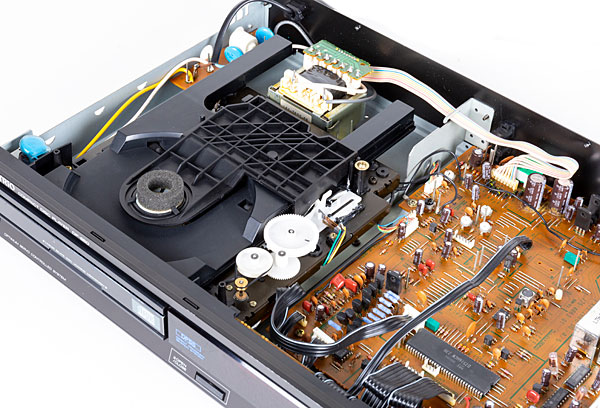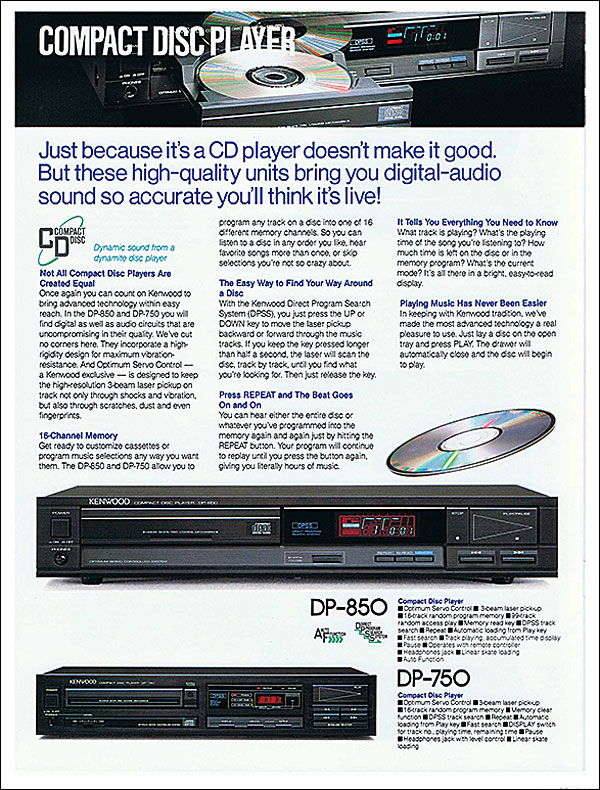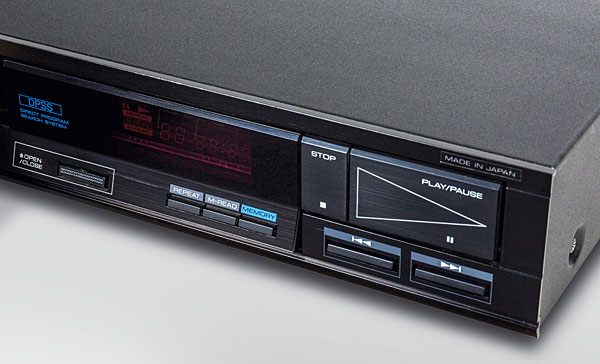Trio DP-850 CD player Page 2
![]() Tim Listens
Tim Listens
Early single-DAC Japanese CD players often sound bright and detailed but fall down in terms of their stereo imaging, possibly as a result of phase distortion introduced by the high slope filters in the analogue stages. The DP-850 fits this description, but as with the Sony-based Ferguson CD-03 [HFN Sep '19] of the same year it was clear that the designs were improving with every passing generation. Compared to the sophisticated European Philips machines that were its rivals when new, the DP-850 has a hard, clinical sound that swaps richness for a sense of pin-sharp focus and bite.
Whether you find this to be a blessing or a curse depends on the rest of your system as the player would certainly inject some life into a set-up that was otherwise a bit too laid-back in its presentation. The limitations of the DP-850's particular presentation can be explored with recordings such as Kate Bush's The Sensual World [EMI CDP 7930 7 82], an album whose dreamy soundscapes are most easily enjoyed on a system that sounds rich and luxurious. From the title track onwards, the DP-850 demonstrated fine vocal projection which gave the various pieces either an odd feeling of intimacy, or left the impression that the lyrics were being shouted at you. Percussion was well timed and distinct, however, even if I did note that the very heavy bass drum beats in 'The Sensual World' sounded a bit ragged around the edges.

I found this player to be more in tune with the material found on the album Nightclubbing by Grace Jones [Island Records IMCD 17]. Here, the heavy basslines found throughout the album helped keep the vocals and other instruments more in proportion, songs such as 'Walking In The Rain' and 'I've Seen That Face Before' showing the DP-850 to be a strong performer. In particular, the percussion here sounded both polished and detailed and I've noticed before that simple players without digital filters can often work very well in this respect.
Being critical, one could say that even this recording could benefit from a bit more bass weight than the DP-850 was able to muster, but then more bass may well have blurred the excellent 'start/stop' definition of the player's sound as it stands. After all, you could always move your loudspeakers closer to the wall…
Real Improvement
An orchestral piece is always a good way to evaluate the ability of audio equipment to project a solid and convincing stereo image. Wagner's Lohengrin – Prelude to Act III [DG 453 485-2] showed that the DP-850 was lacking in this respect, although there did seem to be more sound concentrated around the loudspeakers than in the central area of the listening room. Meanwhile, the various instruments that made up the orchestra could only be localised rather than pinpointed, though I think that all but the very most exacting listener would still enjoy the sound.

Compared to a first-generation Japanese CD player such as the Hitachi DA-1000 [HFN Sep '16] the DP-850 shows a real improvement, it being easier to listen to and capable of producing a more coherent stereo image. Within a few years most of the factories in Japan were turning out twin-DAC machines equipped with the latest digital filters, and alongside these players the DP-850 is arguably at a disadvantage. Nonetheless, that doesn't mean that a lot of pleasure cannot still be had from listening to it.
Buying Secondhand
For the growing band of those collecting early CD players, the DP-850 is certainly worth seeking out. However, as is the case with many of the more obscure players of the early CD era, they do seem to be a bit thin on the ground these days and the greatest challenge might be in finding one to buy.
It is mostly good news after that because as with most things designed with the help of Toshiba, the DP-850 has proven to be a reliable proposition with no major technical trouble spots. To counter this, the parts situation is considerably worse than that for the more obvious Sony/Philips/Pioneer/Technics alternatives, so issues like a worn out optical unit generally mean the end of the road or a long wait for a suitable donor machine.

Of course, other things can go wrong with CD players, and if the DP-850 has a weakness it's that the voltage regulators in the power supply are rather small and not especially well heat-sinked. This can lead to problems with the regulators themselves, along with long-term effects of heat on the surrounding components. So it pays to check that the various DC supply lines are at the correct level before diving into a serious fault-finding session.
On a brighter note, the belt for the tray is exceptionally easy to change with no other dismantling required other than removing the player's lid – not that this needs doing often as the smooth-running loading mechanism makes very little demand on it. Skipping and excessive susceptibility to external vibrations should call attention to the transit screw concealed underneath the DP-850. Often overlooked, the deck's suspension is disabled when it is place.
Hi-Fi News Verdict
The Trio (Kenwood) DP-850 is a well made player that has been intelligently designed and as a consequence is unusually user friendly. What's more, it sounds good too and will be a boon for those with more laid-back systems. It's odd then that they are not more regularly encountered, as a well preserved example would give the vintage hi-fi enthusiast a fine introduction to the sound of early CD.


















































